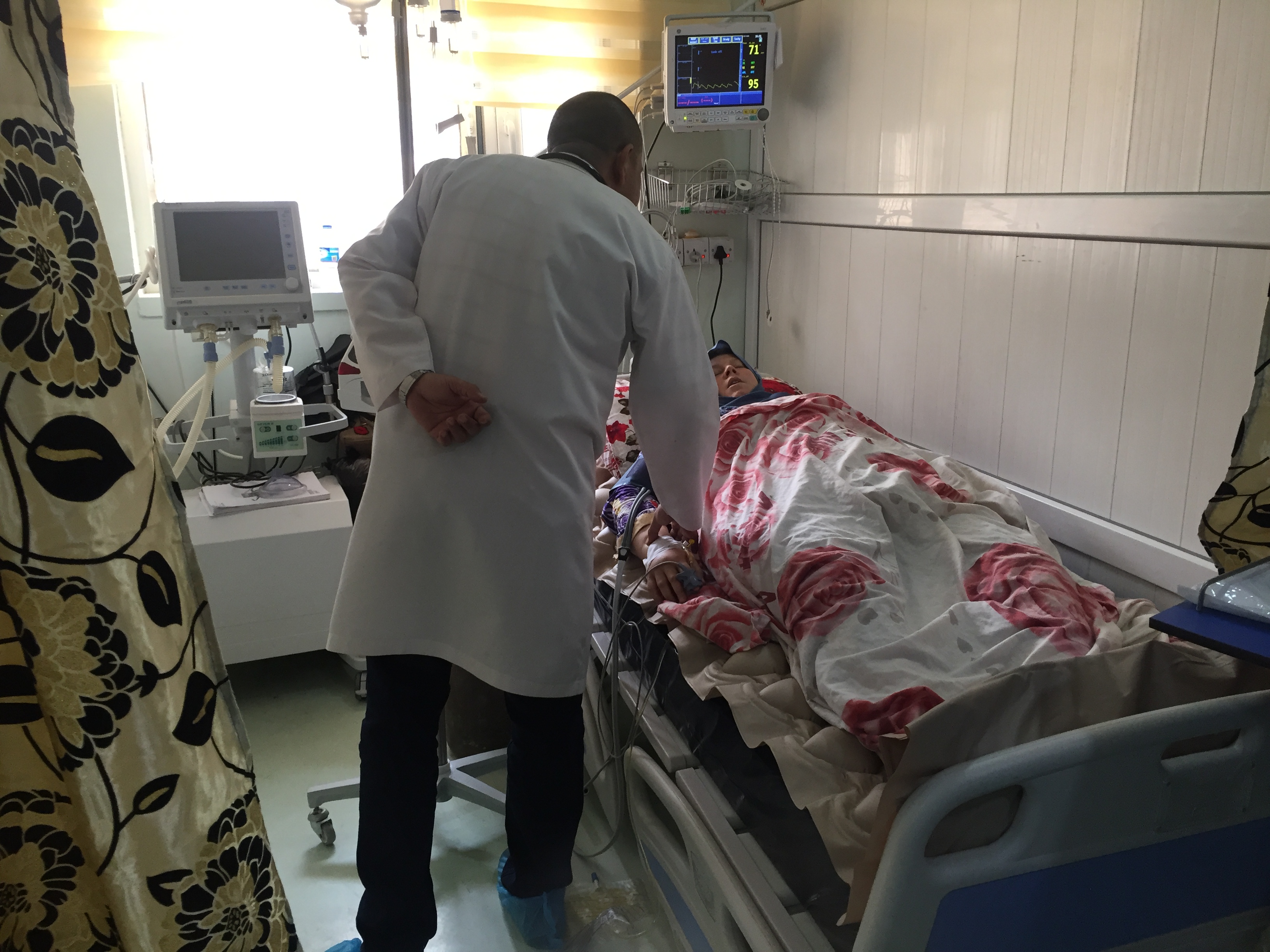 A doctor attends to a patient in the ICU in Salaheddin hospital (Photo: Mariam Sami/WHO Iraq).
A doctor attends to a patient in the ICU in Salaheddin hospital (Photo: Mariam Sami/WHO Iraq).
Pale and speaking breathlessly, Jenan Sabea describes the horrific pain she felt in her stomach 2 weeks ago which prompted her being rushed to hospital. “I was screaming, crying. I was kicking on the floor, kicking hard,” she says. Jenan called an ambulance which transferred her to the Salaheddin General Hospital in Tikrit, Iraq, about 90 minutes away. There, she was immediately attended in the 5-month old intensive care unit (ICU).
Jenan was fasting and she had been suffering from ureter-related pain in the past. Dehydration caused the severe complications leading to the unbearable pain she has had to live with for 2 weeks, before being admitted to the ICU.
Opened on 30 January 2018 with a US$ 112 000 donation by Germany, the 5-bed ICU is the only such available to about 1.5 million residents in the Salaheddin governorate.
“To date, we have treated 67 patients, including 15 children ranging from just a few hours to 15 years of age,” says Dr Nawfal Hadid who heads both the hospital and the ICU.
WHO has supported the 200-bed Salaheddin hospital with expansion of wards, medical furniture and other specialized equipment necessary for the ICU. As military operations in Iraq raged in 2016, WHO provided $200 000 worth of medical equipment to the hospital.
Although one ICU for a governorate of 1.5 million residents might seem like a drop in the ocean, for patients like Jenan, its presence makes a life-and-death difference. Dr Hadid adds proudly, “We now receive referrals from Baghdad, Diyala, Mosul and Samarra. They call us to check for availability of beds and we help out.”
Ever since the ICU opened in January, a steady stream of patients has come and gone, including many with severe trauma from violence that still is a brutal reality for many in Iraq.
In the ICU’s partition next to Jenan’s lies 38-year old Amjad, who was brought in unconscious following a road accident. His plastered leg protrudes from under the blanket as doctors hover around his bed.
“He awoke yesterday and responded to my questions,” says senior anesthesiologist Dr Saad Suleiman. He explains that Amjad has had to be sedated for further treatment that requires stabilization.
It is not immediately known when Amjad can be discharged but treatment in the ICU means he is under constant supervision and his doctors are hopeful he will pull through.
During a recent visit, the corridors of the hospital were teeming with patients, loved ones waiting for results of medical checks and medical staff going about their duties. Dr Hadid says there are plans to increase the hospital’s overall capacity further. His personal dream? To add 2 more operating rooms to the current 5.
“We offer tertiary care, meaning surgery and intensive care. We also have excellent female specialists. Don’t forget this hospital has a training centre for obstetrics and gynaecology,” says Dr Hadid.



